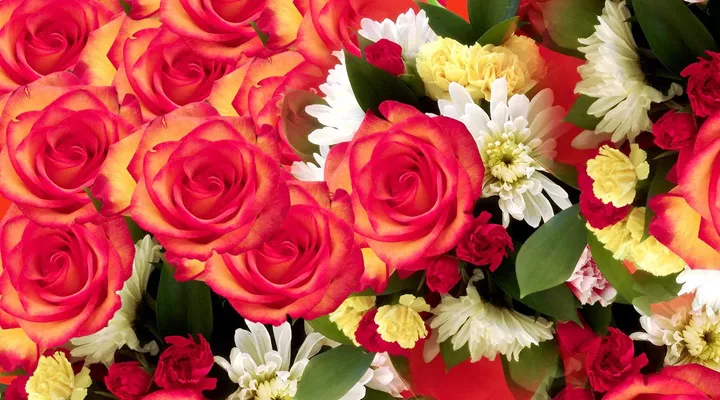Flowers are a wonderful gift from nature, often used to express emotions, beautify spaces, or celebrate special occasions. But how long do real flowers actually last? This question is important for flower enthusiasts, event planners, and anyone who wants to keep their flowers looking fresh for as long as possible. In this article, we will explore the factors that affect the longevity of real flowers, the average lifespan of different types of flowers, and how to care for them to ensure they last longer.
Understanding the Lifespan of Real Flowers
The lifespan of real flowers depends on several factors, including the type of flower, the care they receive, and the environment in which they are placed. Some flowers naturally last longer than others, while others require more attention to maintain their freshness. On average, cut flowers can last anywhere from a few days to two weeks.
Factors Affecting Flower Lifespan
-
Type of Flower: Different flowers have different lifespans. For example, carnations and chrysanthemums tend to last longer, often up to two weeks, while delicate flowers like lilies or peonies may last only a few days.
-
Freshness: The fresher the flowers when they are picked or purchased, the longer they will last. Flowers that have already begun to wilt when bought will not last as long as freshly cut ones.
-
Temperature and Environment: Flowers should be kept in a cool place, away from direct sunlight or heat sources. Warm temperatures can speed up the wilting process. A temperature of around 65-72°F (18-22°C) is ideal.
-
Water and Nutrition: Proper hydration is crucial for the longevity of flowers. Flowers should be placed in clean, fresh water, with the stems cut at an angle to allow for better water absorption. Some people also add flower food to the water to extend the life of the flowers.
-
Humidity: Flowers prefer a moderate level of humidity. Too much moisture can cause mold or mildew, while too little can cause the flowers to dehydrate.
-
Air Circulation: Flowers should be placed in an area with good air circulation. Stagnant air can cause the flowers to deteriorate more quickly.
Average Lifespan of Common Flowers
Let’s take a look at the typical lifespan of some popular flowers. Keep in mind that these are general estimates, and the actual lifespan may vary depending on how well the flowers are cared for.
1. Roses
Roses are one of the most popular flowers and are often associated with romance and love. On average, cut roses can last anywhere from 5 to 7 days. However, with proper care, they may last up to 10 days or more.
2. Lilies
Lilies are beautiful and fragrant flowers, but they tend to have a shorter lifespan. Once cut, lilies typically last between 5 and 7 days. However, they can last longer if their pollen is removed, which helps prevent the flower from wilting prematurely.
3. Tulips
Tulips are delicate flowers that typically last 5 to 7 days after being cut. Their lifespan can be extended slightly by placing them in a cool area and ensuring they have plenty of water.
4. Orchids
Orchids are known for their elegance and longevity. Unlike many other flowers, orchids can last up to two weeks, sometimes even longer if properly cared for. Their beauty and delicate petals make them a favorite for floral arrangements.
5. Daisies
Daisies are bright and cheerful flowers, but they have a relatively short lifespan compared to some other blooms. Daisies typically last 4 to 6 days when cut.
6. Sunflowers
Sunflowers are large, vibrant flowers that typically last 7 to 10 days. They need plenty of water to stay fresh and may last even longer with proper care.
How to Make Your Flowers Last Longer
If you want to make your flowers last as long as possible, follow these tips:
1. Trim the Stems
When you first receive or purchase flowers, trim the stems at a 45-degree angle using sharp scissors or a knife. This allows the flowers to absorb more water and prevents the stems from sitting flat on the bottom of the vase, which can block water intake.
2. Change the Water Regularly
To keep your flowers fresh, change the water every two days. Make sure to rinse the vase thoroughly before refilling it with fresh water. This helps remove any bacteria that may have built up, which can speed up the wilting process.
3. Keep Flowers in a Cool, Draft-Free Area
Flowers last longer when kept in a cool, shaded area. Avoid placing them in direct sunlight, near heat sources, or in areas with temperature fluctuations, as these conditions can cause them to wilt quickly.
4. Remove Wilting Flowers
If some of the flowers in your arrangement begin to wilt, remove them from the vase. This helps prevent the decaying flowers from affecting the rest of the arrangement.
5. Use Flower Food
Many florists include a packet of flower food when you buy flowers. This packet contains nutrients that help prolong the life of the flowers. Follow the instructions on the packet to ensure your flowers get the nourishment they need.
6. Keep Flowers Away from Fruits
Some fruits, like apples, release ethylene gas, which can speed up the wilting process in flowers. Keep your flowers away from fruit bowls or any area where ethylene gas might be present.
Conclusion
While real flowers are a temporary beauty, their lifespan can be extended with proper care. By understanding the factors that affect their longevity and following simple care guidelines, you can enjoy the beauty of fresh flowers for a longer time. Whether you’re buying flowers for yourself or for someone else, a little attention to detail can go a long way in ensuring your flowers stay vibrant and fresh.
Related Topics:


